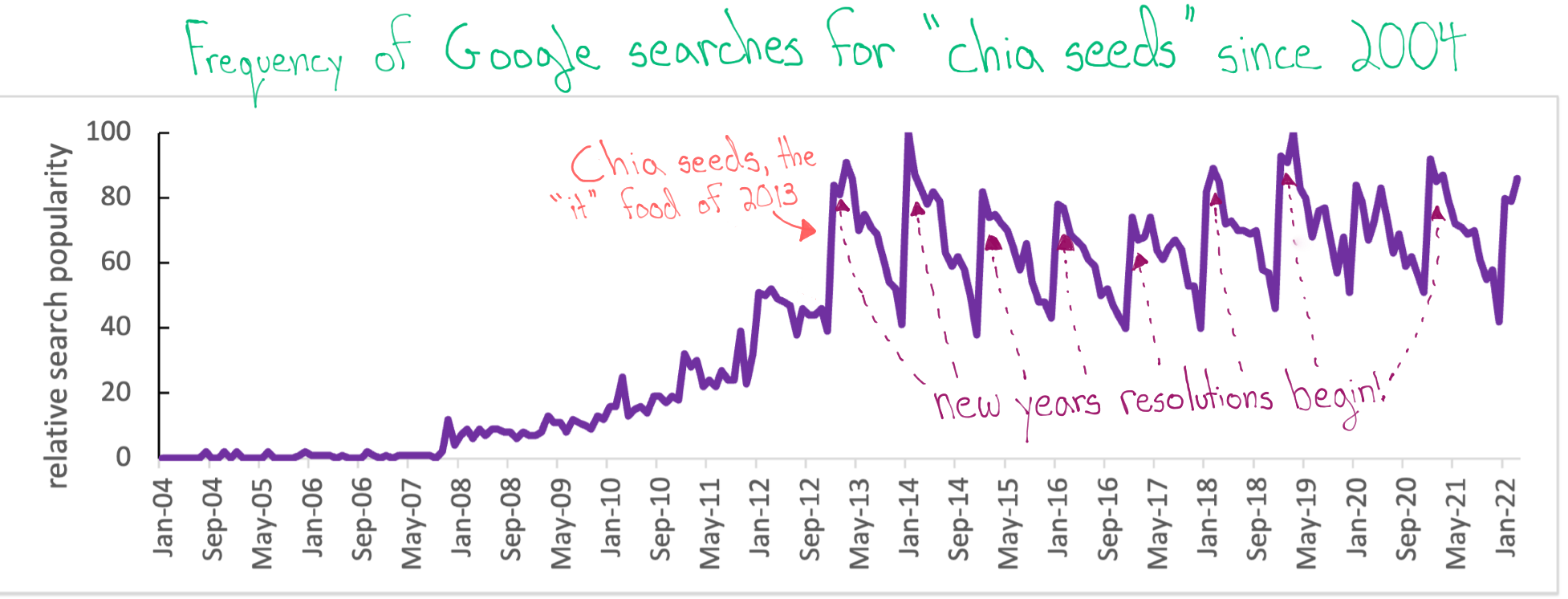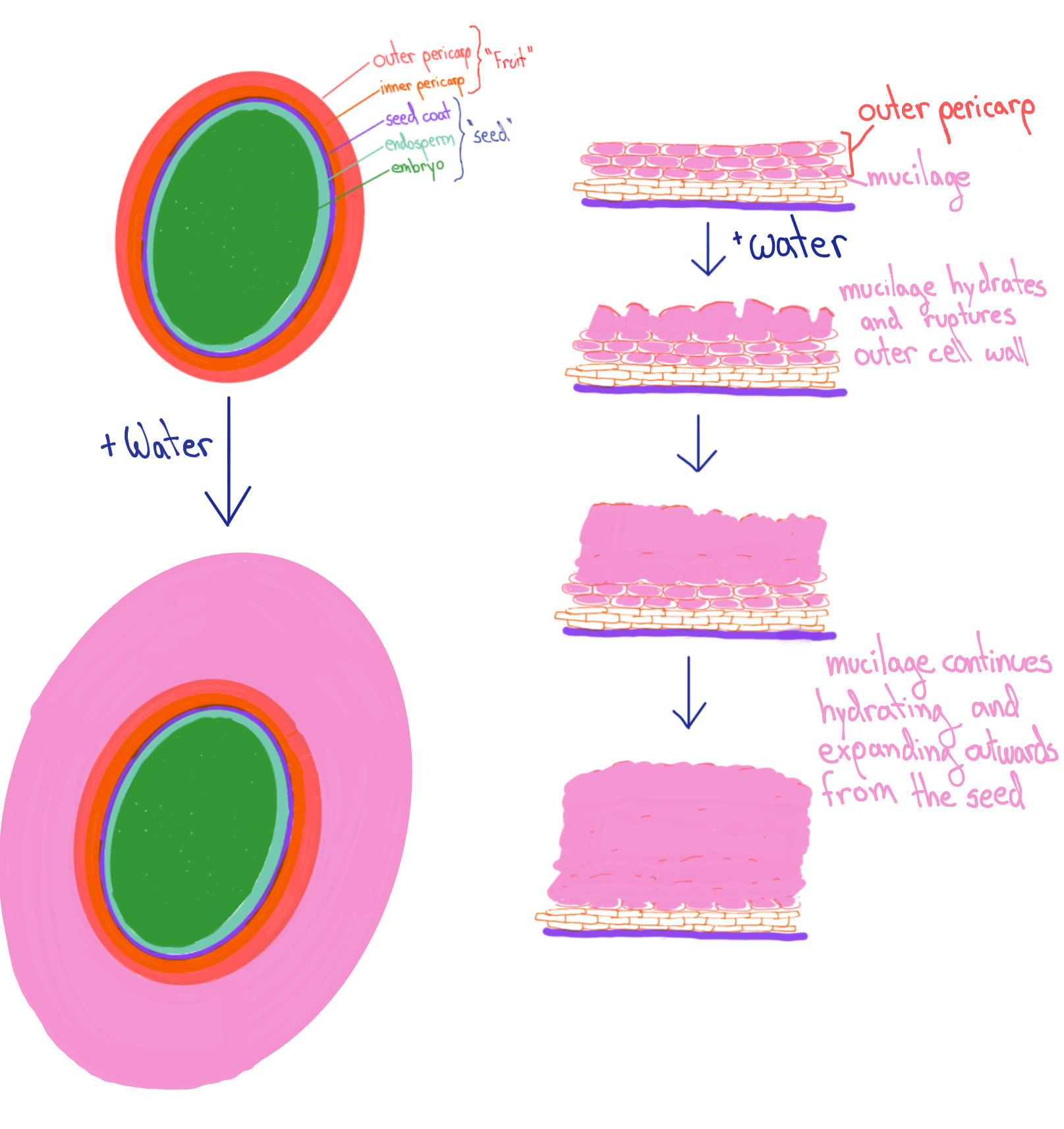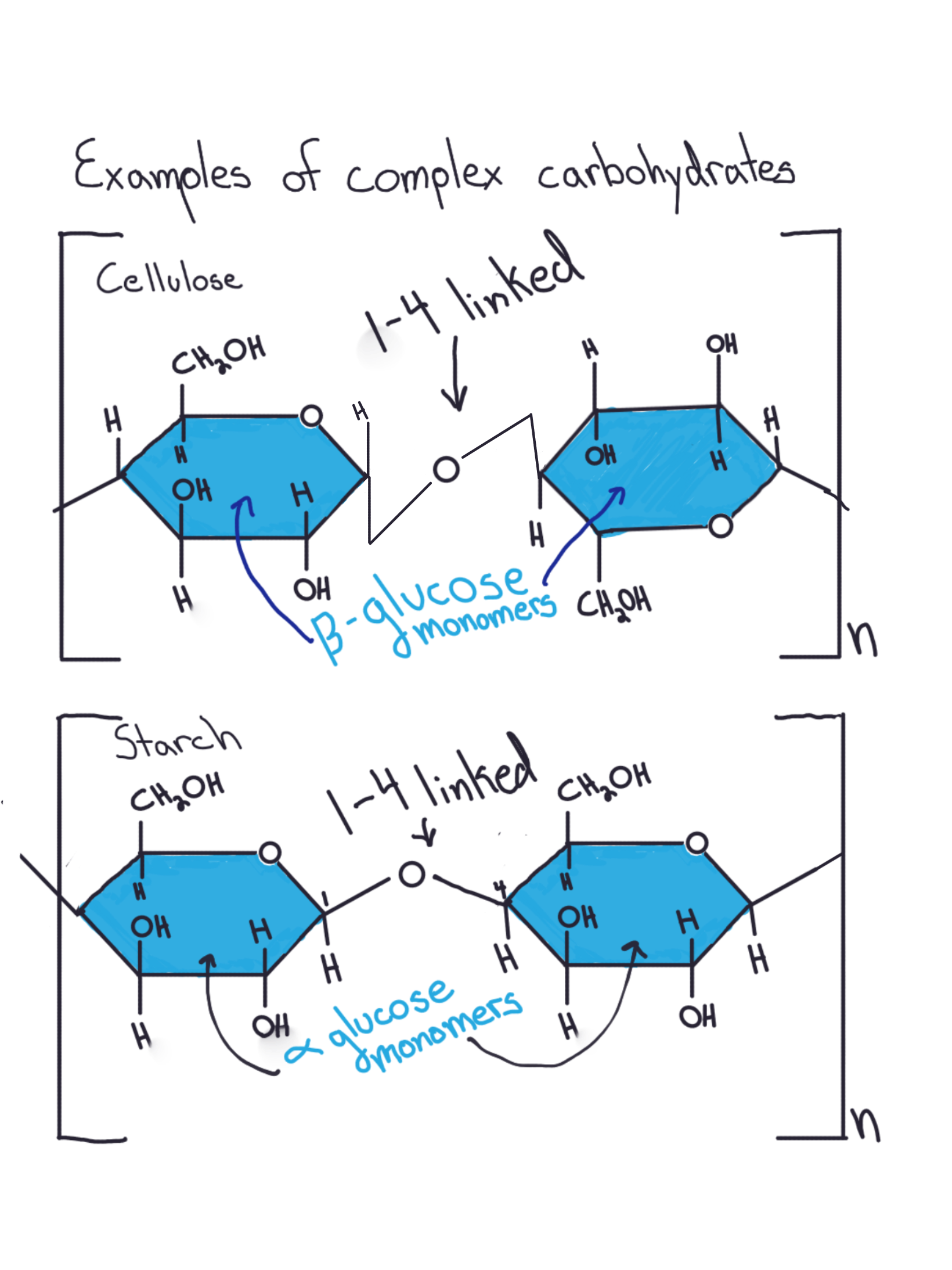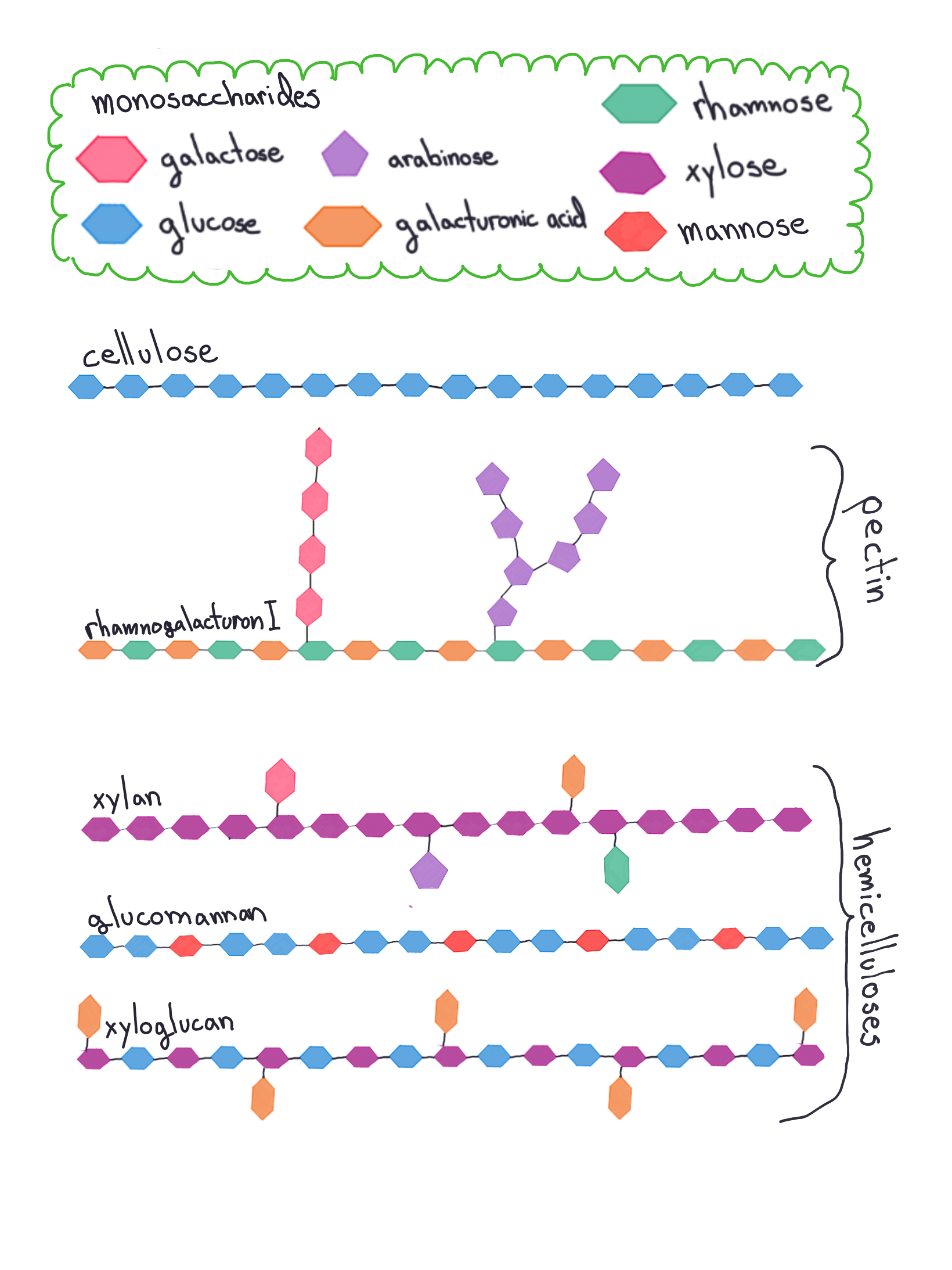Chia and the Magnificent Mucilage
06 Apr 2022Ahh, the mighty chia seed! In the 2010s, this gelatinous little seed exploded onto the health food scene, being officially named the ‘it’ food of 2013. Since then, the chia seed has found its way into breakfast cookies, seedy crackers, vegan chocolate puddings, coconut puddings, cashew puddings and … yeah mainly just a lot of non-dairy puddings. According to nutritionists, chia seeds are nutrient-dense sources of vitamins, calcium, zinc, omega-3 fatty acids, and soluble fiber. They are good for our digestion and are purported to keep us feeling fuller for longer, thanks to their gelatinous expansion when hydrated. They have even earned the title of ‘superfood’, or ‘functional food’ in more academic circles. So, do chia seeds live up to their stellar reputation?

The chia plant (Salvia Hispanic L.) is a member of the mint family and is native to the semi-arid regions of Central America and Mexico (Cahill & Ehdaie 2005). When the seeds from this plant are immersed in water, they extrude a gelatinous substance called mucilage, allowing the seed to germinate in dryer desert environments. Botanists believe that mucilage sequesters water within a hydrated gel matrix of hydrophilic (‘water loving’) carbohydrates, providing moisture to the emerging seedling (Geneve et al. 2017). In fact, chia mucilage is so good at holding water that runners from the Tarahumara tribe of northwestern Mexico, famed for being some of the best ultra-marathoners in the world, are known to mix chia seeds with water, lime juice, and honey to help with maintaining hydration over long runs (McDougall 2009).
So, what is mucilage, and how is it made? Briefly, chia seeds are surrounded by a layer of hardened fruit tissue called the pericarp, meaning the seeds that you buy in the grocery store are actually called nutlets, as they include both seed and fruit tissue. As the nutlet matures, cells in the outer pericarp begin to produce the complex carbohydrates that make up the mucilage (Ryding 2001). When exposed to water, the mucilage inside the pericarp layer quickly hydrates and ruptures the cell walls on the topmost layers of the pericarp and extrudes outwards from the seed at a rate of 0.2 mm2/min (Geneve 2017). Interestingly, as the mucilage expands, it remains tethered to the lower cell wall of the pericarp, allowing the gelatinous substance to remain connected to the seed!

Chia mucilage is composed of several complex carbohydrate components. As you may remember from that one friend who is really into their keto diet, a complex carbohydrate is a chain of repeating sugar molecules or saccharides. Starch, for example, is a chain of repeating 1-4 linked α glucose monomers, whereas cellulose is repeating units of 1-4 linked β glucose monomers (need more background? https://www.khanacademy.org/science/ap-biology/chemistry-of-life/properties-structure-and-function-of-biological-macromolecules/a/carbohydrates).

The complex carbohydrates found in the mucilage of chia seeds are a combination of cellulose, pectin, and hemicelluloses, which together form a highly hydrophilic matrix that expands when exposed to water. While cellulose is composed only of glucose units, the pectins in chia mucilage are composed of alternating units of rhamnose-glucuronic acid decorated with arabinose and galactose side-chain units (Lin & Daniel 1994;Western 2012). Hemicellulosic sugars found in chia include chains of repeating xylose, glucose-xylose, or glucose-glucose-mannose units, all of which are decorated with other saccharide side chains (Western 2012). I explain all of this to, hopefully, convince you that carbohydrates have depth and complexity deserving of our fullest appreciation (no matter what your one always irritable keto friend says).

As I mentioned at the start, chia seeds have become very popular in all kinds of health food snacks. The complex carbohydrates found in the mucilage, especially pectin, have several positive health benefits, including lowering blood sugar levels, improving gut health, and managing blood pressure (Anderson 2009). However, there is also growing interest in the use of complex carbohydrates in mucilage as a natural stabilizer in foods and cosmetics (De Falco et al. 2017). Moreover, researchers are using glucuronoxylan polymers produced by the mucilage of quince seeds as a scaffold for hydrogels used in tissue engineering and wound dressings (Oran et al. 2022).
So are chia seeds worth the hype or are they just another health food fad? Hopefully, I’ve convinced you that the complex and amazing matrix of carbohydrates exuded by these magnificent little seeds makes them truly deserving of their growing popularity!
Bonus reading:
Anderson, J.W., Baird, P., Davis, R.H., Ferreri, S., Knudtson, M., Koraym, A., Waters, V. and Williams, C.L., 2009. Health benefits of dietary fiber. Nutrition reviews, 67(4), pp.188-205.
Cahill, J.P. and Ehdaie, B., 2005. Variation and heritability of seed mass in chia (Salvia hispanica L.). Genetic resources and crop evolution, 52(2), pp.201-207.
De Falco, B., Amato, M. and Lanzotti, V., 2017. Chia seeds products: an overview. Phytochemistry Reviews, 16(4), pp.745-760.
Geneve, R.L., Hildebrand, D.F., Phillips, T.D., AL-Amery, M. and Kester, S.T., 2017. Stress influences seed germination in mucilage‐producing chia. Crop Science, 57(4), pp.2160-2169.
Lin, K.Y., Daniel, J.R. and Whistler, R.L., 1994. Structure of chia seed polysaccharide exudate. Carbohydrate polymers, 23(1), pp.13-18.
McDougall, C., 2010. Born to run: The hidden tribe, the ultra-runners, and the greatest race the world has never seen. Profile Books.
Oran, D., Unal, S. and Gunduz, O., 2022. Evaluation of bacterial cellulose/quince seed mucilage composite scaffold for wound dressing. Emergent Materials, pp.1-7.
Ryding, O., 2001. Myxocarpy in the Nepetoideae (Lamiaceae) with notes on myxodiaspory in general. Systematics and Geography of Plants, pp.503-514.
Western, T.L., 2012. The sticky tale of seed coat mucilages: production, genetics, and role in seed germination and dispersal. Seed Science Research, 22(1), pp.1-25.